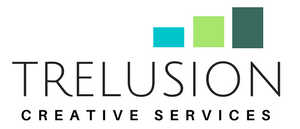Advancements in digital communication technology have changed the landscape of mass media and forced companies in the industry to make drastic changes in how they provide content, engage with audiences, and attract and retain advertisers. Over the past several decades, many traditional media organizations have been forced to reinvent themselves in order to remain relevant: record labels, print newspapers and broadcast radio stations, just to name a few. Some, like Blockbuster Video and Tower Records, failed to survive the transition at all, while others made an attempt at success in the digital world but ultimately suffered significant decline, such as Napster, MySpace or Digg.com.
One media industry that faces the need for dramatic improvements in the digital era is cable television. More and more people are cutting the cable TV cord, forsaking expensive contracts with cable giants like Comcast or Time Warner and turning instead to online video and other digital television formats. Cable companies are under increasing pressure to unbundle their traditional bulky, expensive channel packages and to offer a la carte television as a way to meet the new audience expectations and compete with online providers. According to Nielsen research, people between the ages of 18 and 24 are spending 30% less time per week watching television than they were just four years ago, while another 18% from ages 24 to 35 are doing the same. In place of television, many of these users are using YouTube for online video and/or turning to new virtual cable companies such as Netflix and Hulu, opting to pay only for the shows they want to see and to watch them at the time and place of their choosing.
Another industry that is desperately in need of a digital overhaul is the newspaper industry. The ongoing decline of print media that was brought about by the Internet is a result, at least in part, of a general failure on the part of the industry to invest in innovation and to actively embrace a new, millennial-friendly business model. Studies by the Pew Research Center’s Project for Excellence in Journalism have shown that even now, “most papers are not putting significant effort into the new digital revenue categories that, while small now, are expected to provide the most growth in the future.” As a result of this inertia and lack of effort, newsrooms continue to shrink, advertising revenue continues to dwindle, and fewer newspapers seem likely to survive the transition. The rise of social media, and especially Facebook, as a significant source of news for the majority of American adults clearly indicates that newspapers are being forced to move away from their traditional business models. They will need to find new ways to compete with social media and other online resources without charging consumers for access to content or relying on subscription-based advertising.
A third area of digital media that still needs considerable improvement relates to the issue of web accessibility: that is, media designed with consideration for accessibility by people who are deaf or disabled. While there have certainly been some significant advancements in this area due to technological developments, this technology often comes with limitations that media companies have been slow to address or overcome. For example, much of the live video content published online does not contain subtitles, and therefore is not accessible to deaf people, while subtitles provided on channels like Netflix remain unreliable. Flash animation used on websites and smart phones is often unreadable by the screen readers that people who are vision-impaired use to translate text into speech. Other website elements, such as interactive graphics or captchas (those garbled text tests that many websites use to ensure the user is not a robot), often are not recognized by these screen readers as well. Although established standards exist for design and coding that enable web sites and mobile apps to be accessible, many developers are still not using these to their best advantage, meaning some websites are easily accessible while others absolutely are not.
Digital technology has permanently changed the way we communicate and share information on a global scale. And considering how quickly this technology changes and grows, it seems likely that there will always be additional opportunities for media companies to find ways to improve the field of communication with new digital tools. Hopefully, the content producers of the future will be up to the task.
